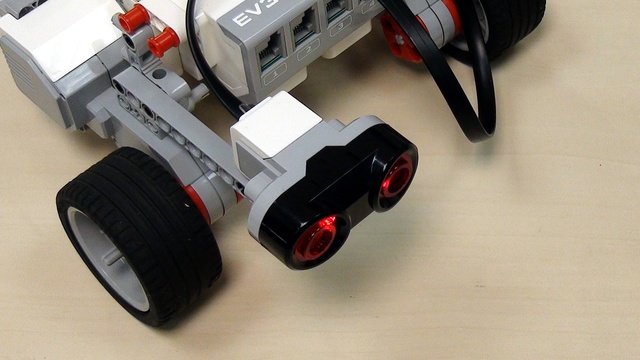

WRO Elementary 2015. Field Run. Part 2
Showing the same run, but from a different angle. This allows you to see more of the way we sensors work and how exactly the robot positions itself.
- #192
- 27 Dec 2015


Showing the same run, but from a different angle. This allows you to see more of the way we sensors work and how exactly the robot positions itself.


In this video tutorial, we would do a few experiments with the coefficients for the Integral compensation. There are actually two coefficients - "c" and "b"

Building instructions for a robot for the World Robotics Olympiad Sputnik competition. This is the light version without the lift at the top.


The telephone game played with LEGO Mindstorms EV3 robots relies on the Color Sensors and the detection of colors. Sometimes the robots won't work. They could be influenced by a number of factors like the position of the sensor and the lighting in the room. This tutorial is a demonstration on how to account for and resolve this issue.

This robot is part of the category of robots called animals. After following the building instructions you would have a frog that could jump. Of course, the jump depends on the surface and the friction between the robot and the ground... quite complex physics involved. But if you program it to move forward it will try to jump and it is your job to try to make it jump higher.
You could try to extend some of the legs, for example.


In this episode we build a reusable attachment for a LEGO Mindstorms EV3 robot that changes gears orientation and direction. It is one of the most useful attachments that you could use to move levers up/down and right/left. Adding the attachment on the robot takes 2-3 seconds and shows a very useful general principle of how to build reusable attachments.

Building instructions for the Rubber Band Attachment

We are introducing the LEGO Mindstorms EV3 Ultrasonic Sensor. The first program is actually to detect an object and stop near it, at about 4 inches/10 centimeters. The ultrasonic sensor could be used during robotics competitions, but most of its use is for experiments.